Some of the links in this post may be affiliate links.
Commonly known as Philodendron Silver Sword, this is a stunning plant that is both easy to grow and propagate in the home. If you are obsessed with the aroid plant family, this plant is a must-have for your collection.
The silvery leaves are absolutely beautiful. Keep reading to find out more about caring for and propagating this beauty, and I also answer some commonly asked questions.
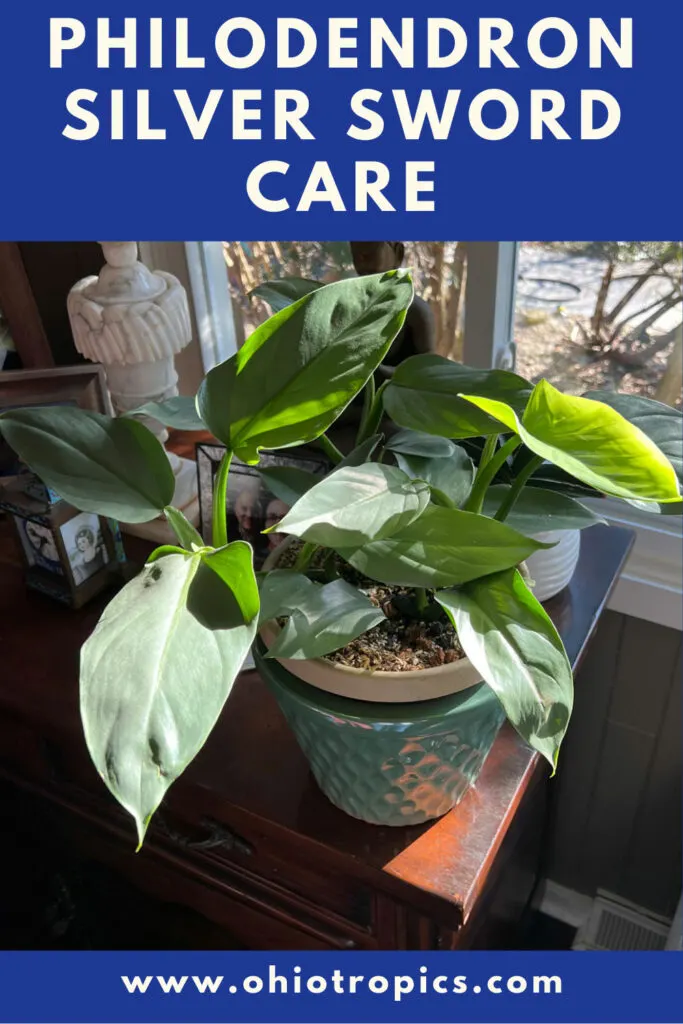
Table of Contents
PHILODENDRON SILVER SWORD SCIENTIFIC NAME
Philodendron hastatum is the accepted species name for Silver Sword Philodendron. It is native to southeast Brazil and is considered endangered in its native habitat.
Its habitat is protected in Rio de Janeiro within Parque Nacional da Floresta da Tijuca and also in the Reserva Biológica do Tinguá.
PHILODENDRON SILVER SWORD CARE
Despite its exotic looks, this is an easy plant to care for! Let’s get into some details:
LIGHT
Like many aroids, these plants are vining and grow up trees in their native habitat, and will mostly receive indirect light to dappled sun. However, what does this mean inside of a home?
Indoors, there is much less light than we think, and you can safely give your Silver Sword some direct sun. I wouldn’t recommend sun all day though.
An Eastern facing window would be a wonderful spot for your plant. A Western facing window (afternoon sun) would also be good.
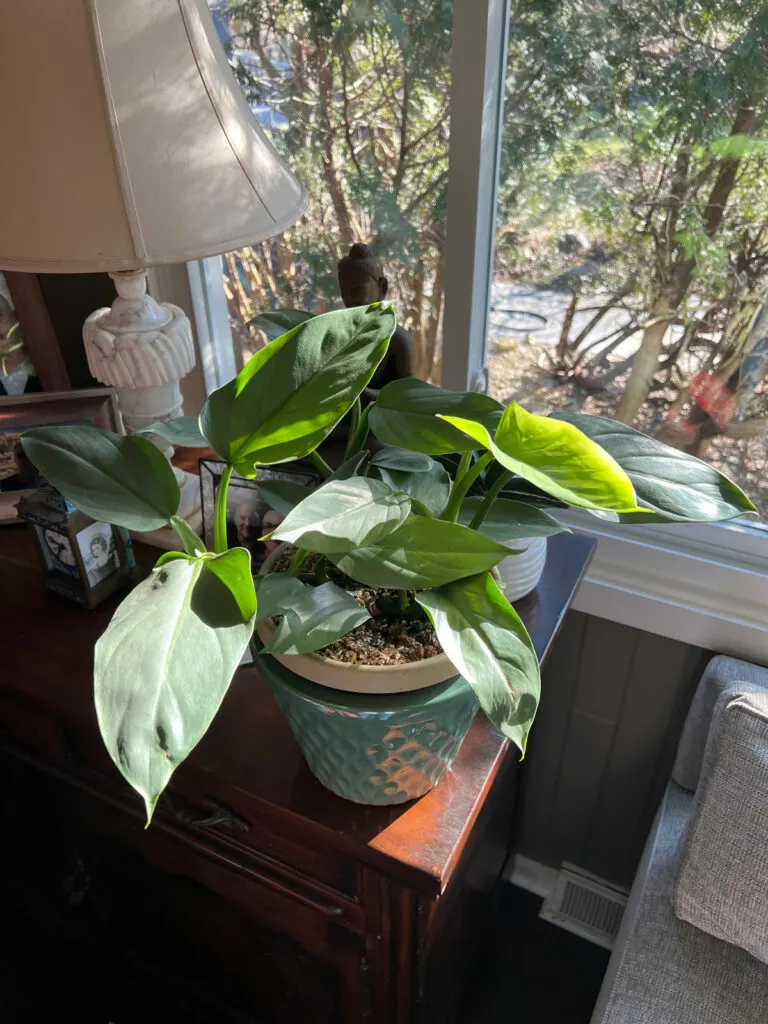
If you have a window that gets NO direct sun, that is fine as well, but please make sure to place it directly in front of the window.
For particularly sunny windows that receive over half a day of direct sun, you may want to diffuse the sun with sheer curtains or blinds, or set your plant back a little bit from the window.
I would not recommend keeping this plant in all-day sun.
If you’ve had your plant for a while and it is not growing, you may have your plant sitting in too dark of a location.
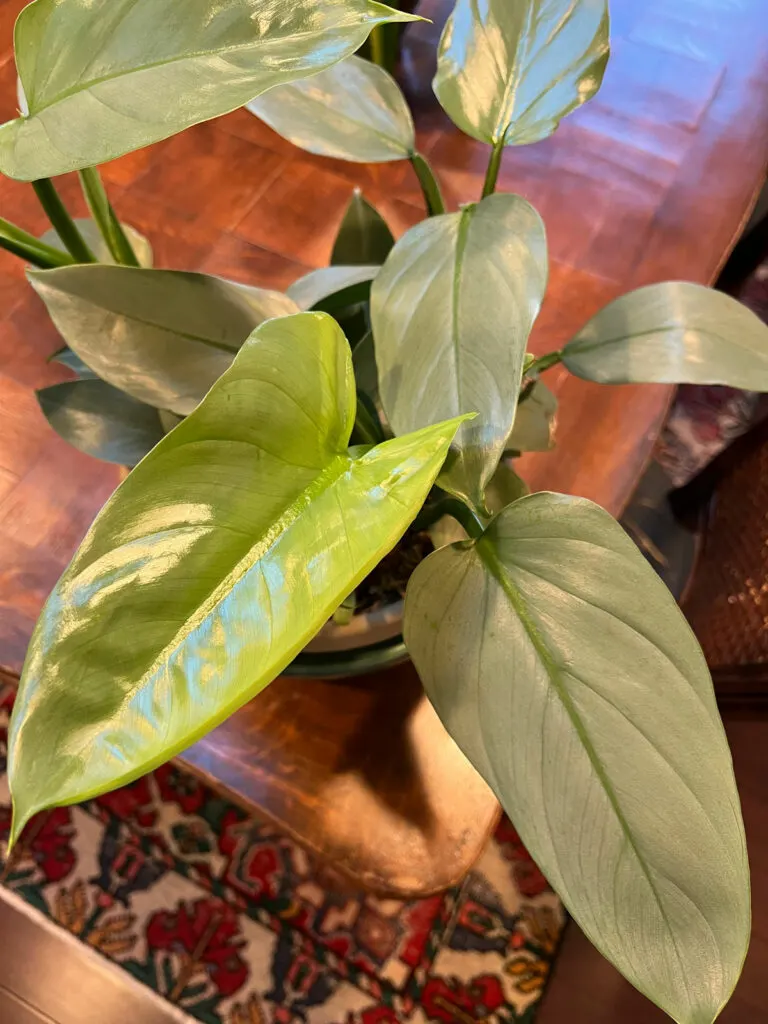
WATERING
Philodendrons are pretty forgiving when it comes to watering, but please keep in mind that you should always water thoroughly.
I do let mine dry out appropriately though before I water again.
You can safely allow the top quarter to top half of the entire pot to go dry before watering again.
Feel the potting mix to determine how dry it has gotten. Do not rely on a moisture meter as many are notoriously unreliable and junky, and many of my clients have damaged their plants by relying on them blindly.
Try and avoid complete dryness though in your potting mix otherwise, if you leave it completely dry for too long, you will start to have yellowing lower leaves.
Never let your Silver Sword sit in water for extended periods of time so be sure to discard any excess water in your plant’s saucer or decorative pot in order to avoid root rot.
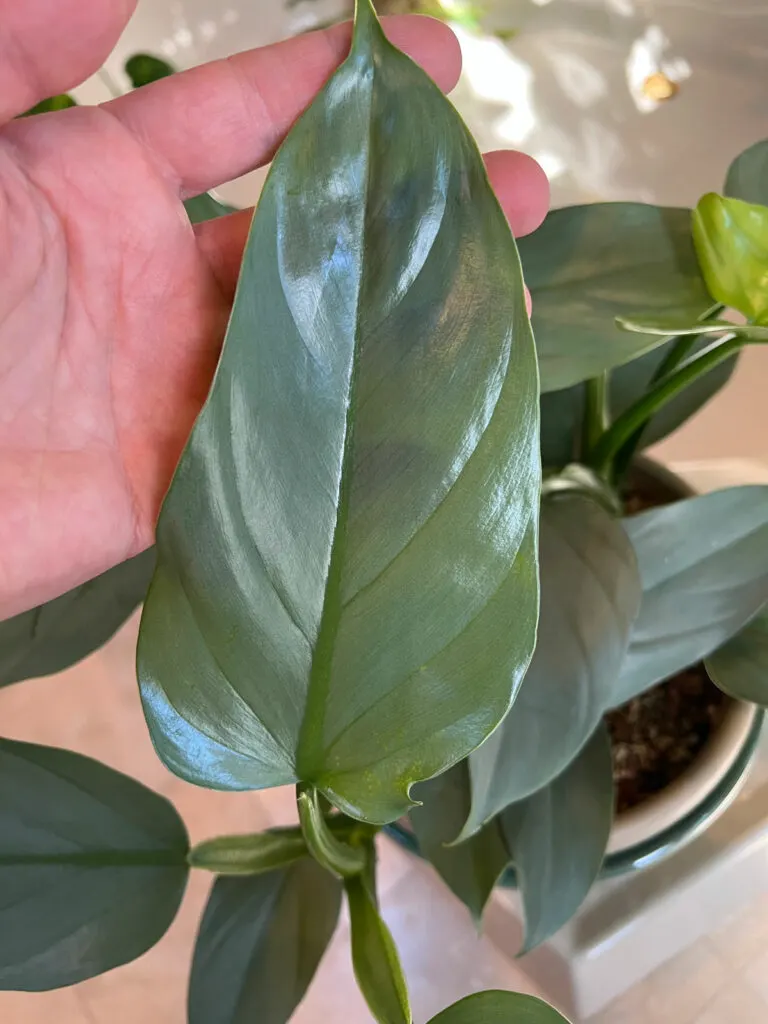
FERTILIZING
For all of my aroids, and even other tropical plants I grow indoors, I use Dyna-Gro Grow and you can easily purchase it on Amazon.
Dyna-Gro Grow is an amazing, nutritionally complete fertilizer that contains all the micro and macro nutrients that plants need to thrive. I’ve been using this fertilizer for years with wonderful results.
It is also urea-free so there is less risk of burning your plants! Using a premium fertilizer like this makes a big difference in the vigor and growth rate of your plants.
You can use the fertilizer at full-strength and fertilize less frequently, but I like to fertilize dilutely with every watering.
I simply add 1/4-1/2 teaspoon per gallon of water and use that every single time I water.
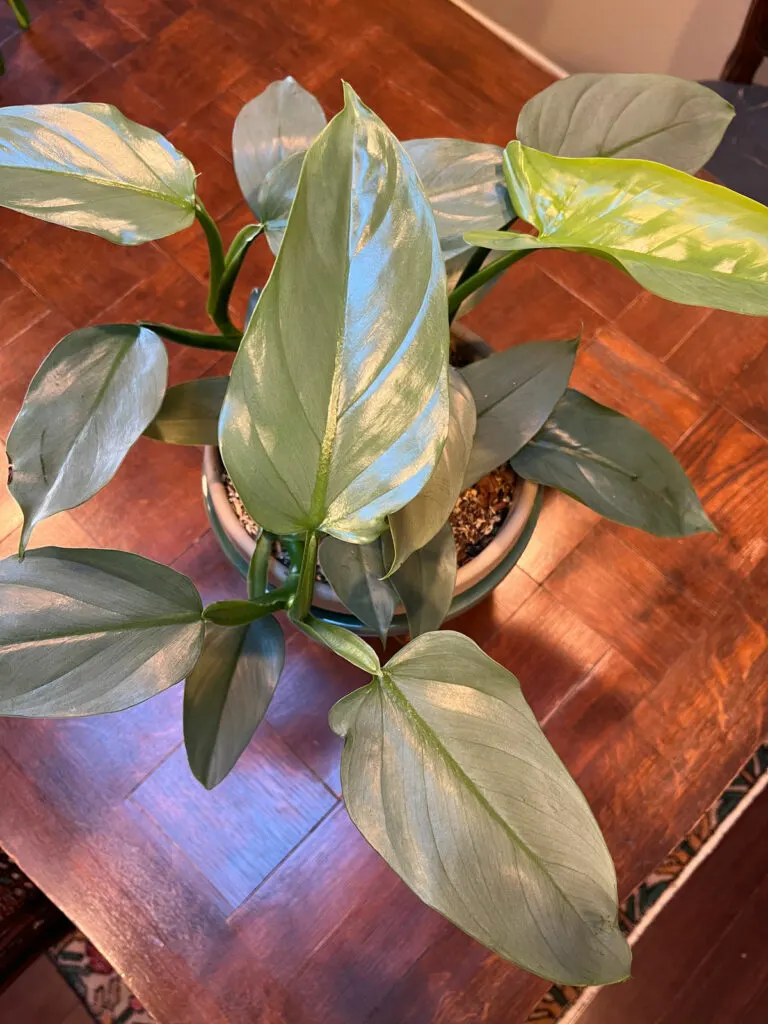
SOIL
You don’t need to get super fancy with the potting mix for your Silver Sword, but here are some guidelines to consider.
You have multiple options available for your potting medium.
And many people have their own special blends. As long as you have excellent drainage, and your mix has added material to increase porosity of your mix, you will be fine.
Here are some options:
- 2 parts of a good all-purpose indoor potting mix plus 1 part perlite
- Equal parts potting mix, perlite and orchid bark
- Any special potting blend formulated specifically for aroids
Keep in mind that the chunkier your potting mix is, the more quickly it will dry out, so you’ll end up watering more frequently. You can adjust your blends to suit your conditions and your lifestyle.
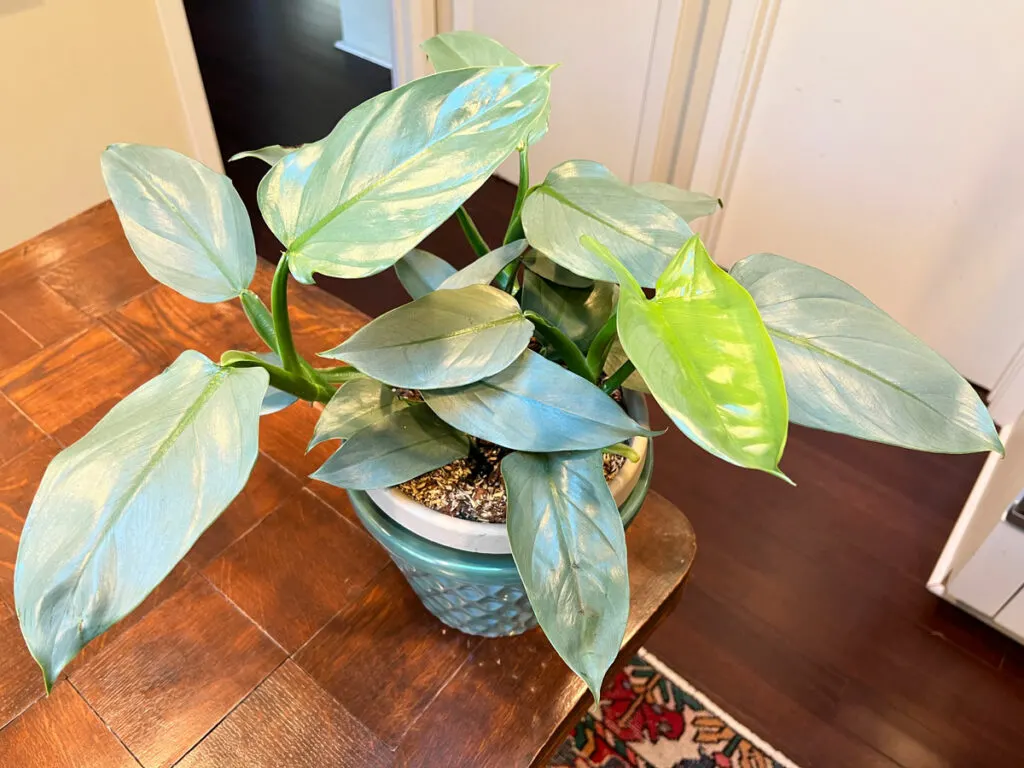
TEMPERATURE & HUMIDITY
These are warmer growing plants so make sure to avoid any cooler rooms or areas with cold drafts in your home. Aim for a minimum night time temperature of 60F (about 15.5C).
Typically, average indoor humidity is just fine for these plants, but if you can,
I’d recommend maintaining the relative humidity at least around 40-60% if you can.
GROWTH SUPPORT – HELPING YOUR SILVER SWORD MATURE
These plants are climbers, so for full effect, you’ll need to provide some sort of structure for your plant to attach to and climb on. And it’s never too soon to add a climbing structure!
Silver Sword will produce roots along the vines and those roots will firmly attach onto whatever support structure you use.
When the plant is provided with a structure to attach to and climb on, your plant will be encouraged to form adult foliage that is deeply lobed.
Juvenile leaves will lack the lobes. If you don’t provide a climbing support, your plant will always retain juvenile leaves.
One great support structure to use is a moss pole. I’ve been disappointed with moss poles available on the market (they’re inferior and expensive), so I make my own.
Check out my DIY moss pole tutorial for step-by-step instructions to make your very own moss poles. They’re much better quality, more inexpensive, and well worth the minimal effort to make!
I plan on training my own plant up a moss pole soon, so I will update this post at that point.
HOW TO PROPAGATE SILVER SWORD PHILODENDRON
This plant basically tells you how to propagate it. If you look closely at the vine, you should notice aerial roots at the nodes (where the leaves meet the vine in this case).
See the photo below for an illustration.
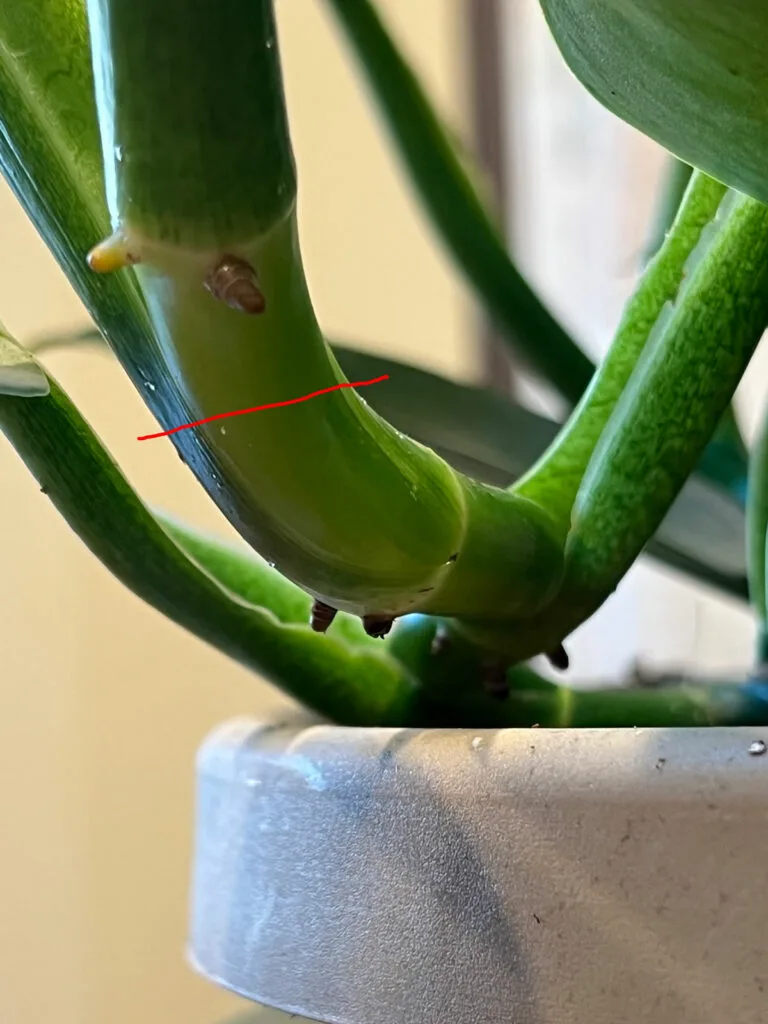
Simply make a cutting at the end of your vine, and cut right about where the red line is in the photo above.
Then place the cutting in water so that the aerial roots are under water, and wait until roots grow about an inch long or so. Don’t make the cutting too huge. A cutting with 1-3 leaves is plenty.
Once your roots are about an inch long, go ahead and pot it up. Easy peasy!
If you have a long vine and you want to make many plants, you can make single node cuttings. Simply cut on either side of the node where you see the aerial roots (and leave any attached leaves), and water propagate them.
(For an example of what single node cuttings look like, refer to my post on propagating Pothos. The process is identical.)
Your original plant will grow back after you take your cuttings. In fact, sometimes you can even see where the plant will grow back even before you make a cutting.
Take a look at the photo below:
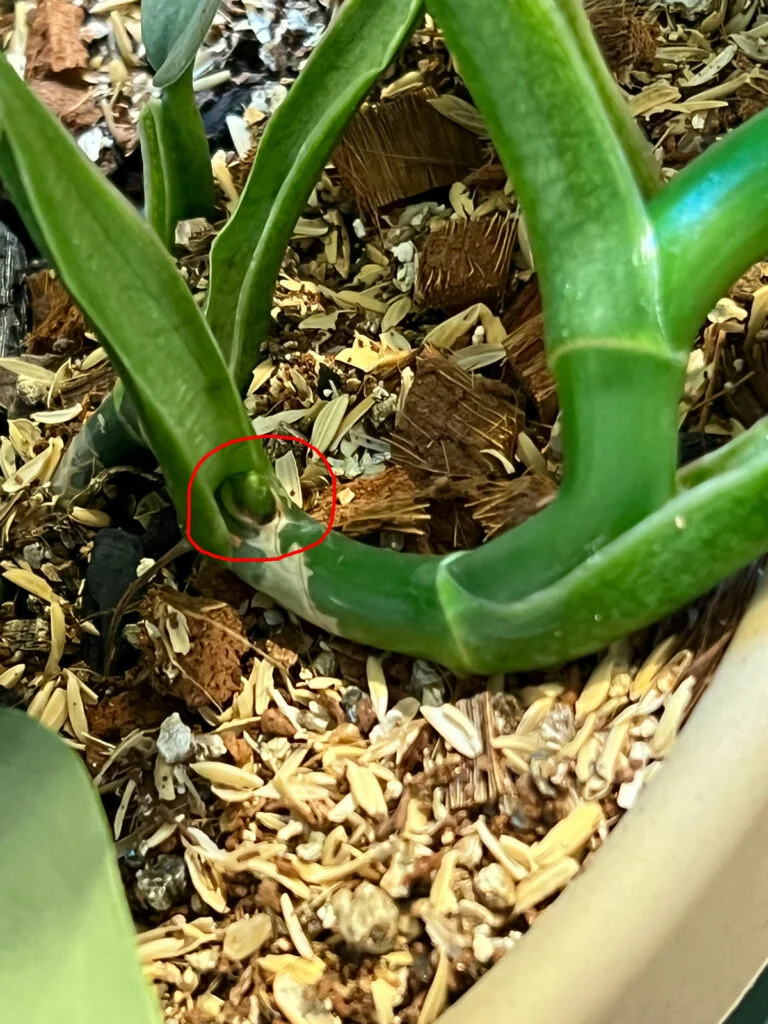
Notice where the red circle is (this is the dormant eye). If you cut the vine at any point above this point, this dormant “eye” will burst into growth and your original plant will start to grow again.
Sometimes you won’t easily see any eyes, but know that your plant will still grow back in time.

FREQUENTLY ASKED QUESTIONS
Is Philodendron Silver Sword rare?
Although it is endangered in the wild, this plant can be found fairly easily, particularly online. Whether it is in stock or not is a different story as they are very popular and can sell out quickly. I found my own plant at a local garden center.
Is Philodendron hastatum the same as silver sword?
Yes, Philodendron hastatum is the botanical name for this plant.
Is Philodendron silver sword poisonous?
Yes, just like any aroid, Philodendron species contain calcium oxalate crystals which will cause irritation in your pets if they nibble on your plant.
Why is my silver sword Philodendron yellow?
Yellowing leaves can be caused by multiple factors. Check out my blog post on causes for yellowing leaves in houseplants for a more detailed explanation.
Since there are so many reasons, you need to diagnose for your own particular case.
One of the most common reasons that houseplants get yellow leaves is from soil that has gone too dry for too long. One indication of this would be when the lower leaves yellow on your plant.
Are Philodendron Silver Sword plants fast growers?
Depending on your growing conditions, these plants can grow relatively quickly, especially if you have ample warmth, moisture and light.
Does Silver Sword flower?
Yes, it has the typical aroid flowers. Indoors though, flowering is rare. It is much more likely that you’ll see flowering if you grow this plant in a greenhouse, with a growing support, or out in the wild.
That’s all folks! If you are obsessed with Philodendron species, be sure not to miss my blog pot on 13 Easy to Grow Philodendrons.

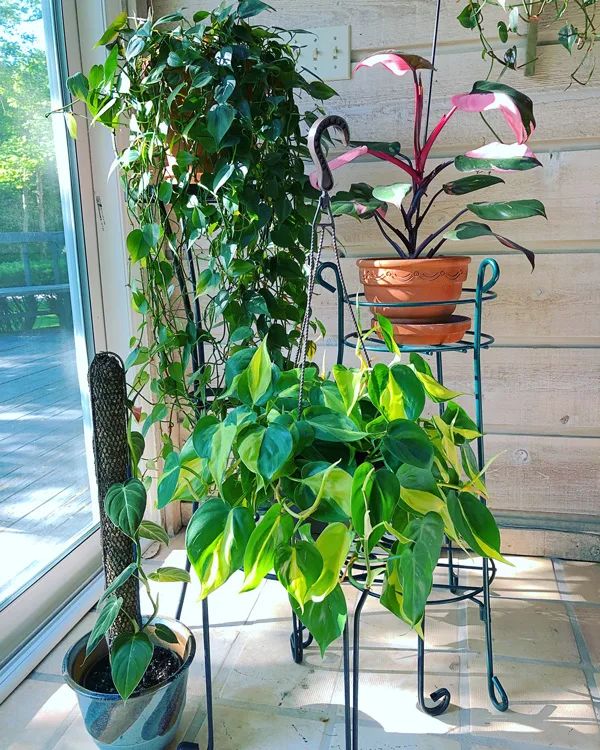
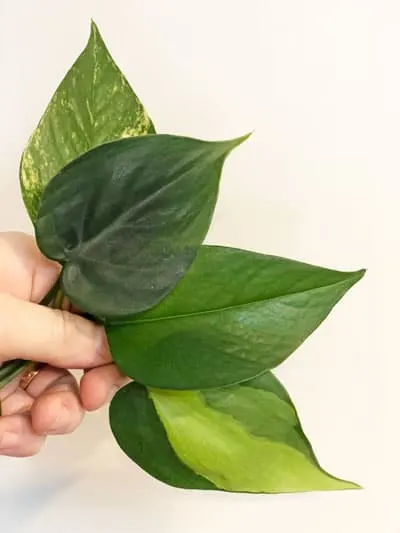
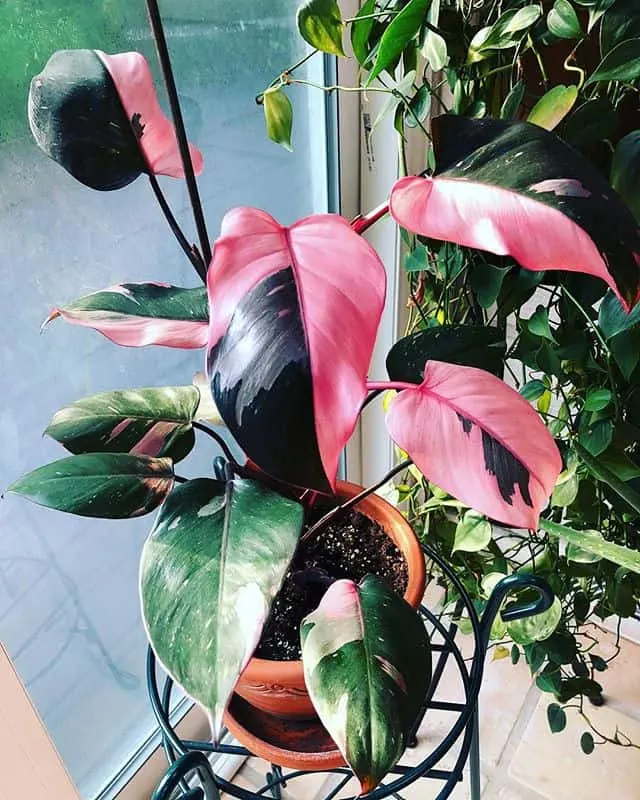
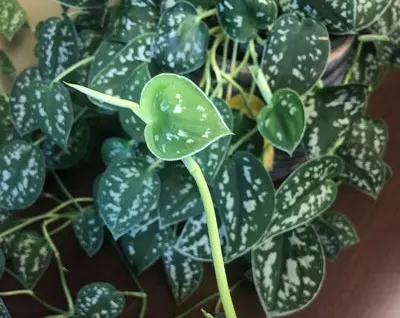
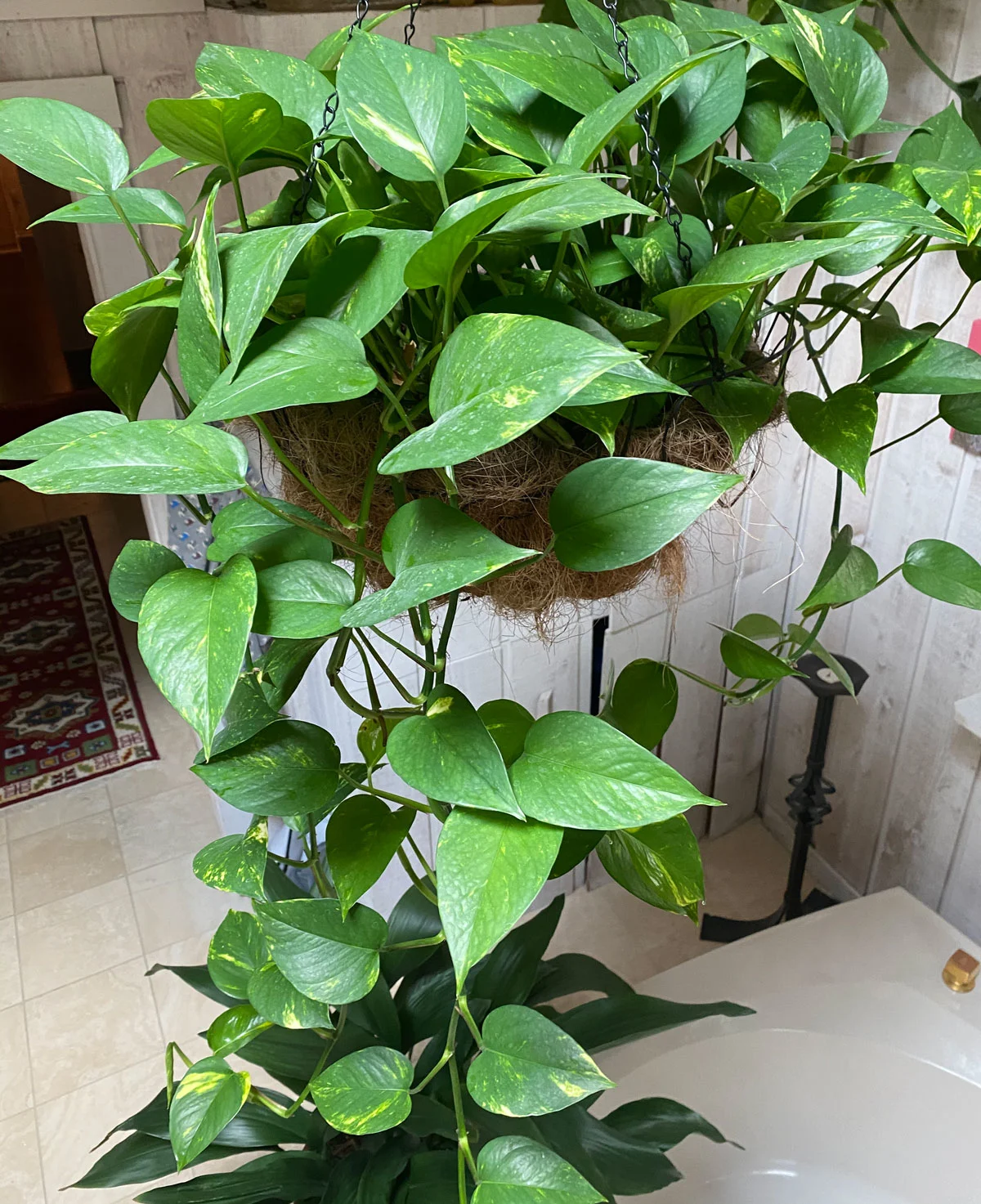
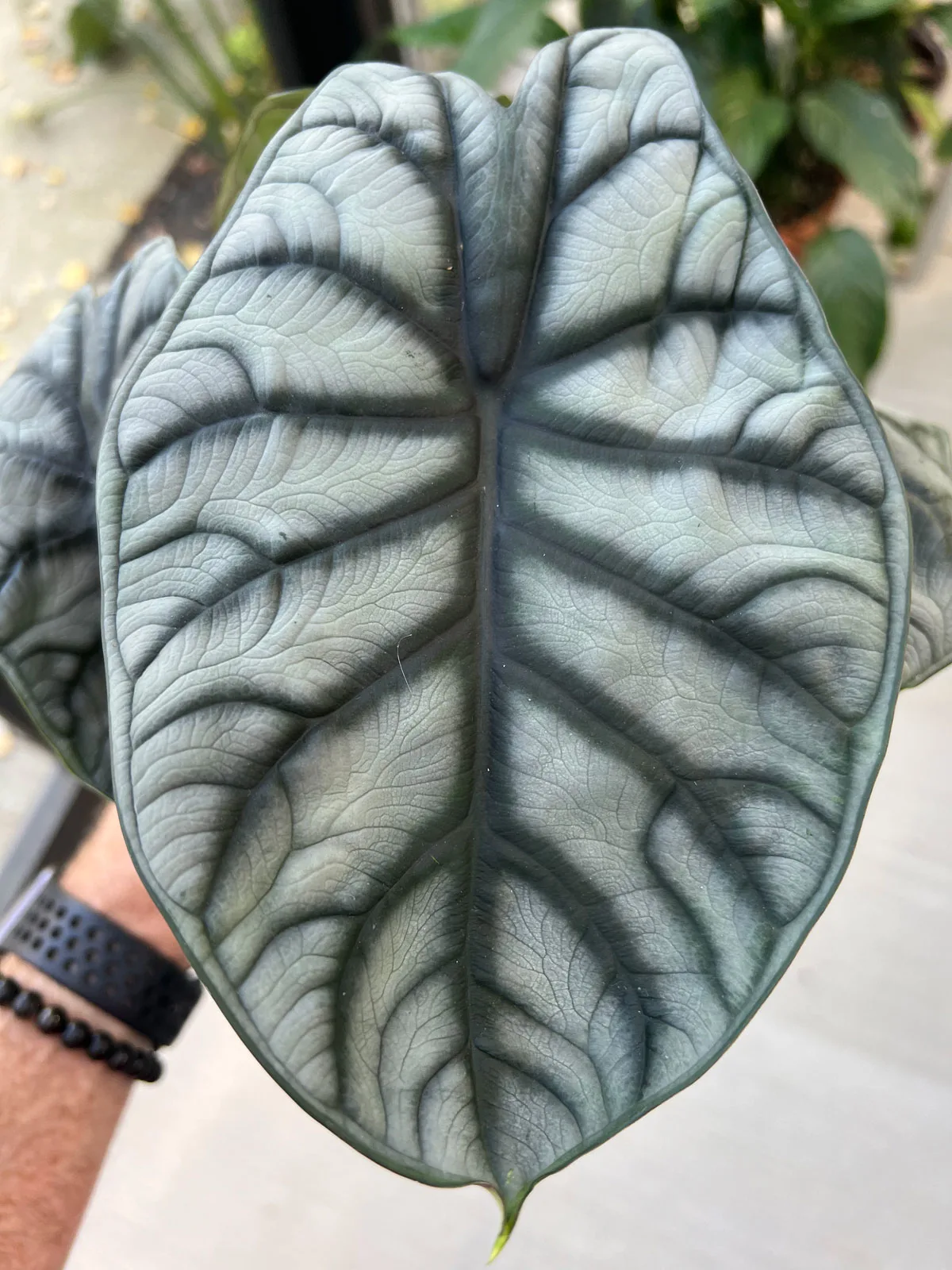
Marcela Romero
Saturday 3rd of February 2024
Thank you for the information on philodendron silver sword! I have a problem with mine, it’s new leaves are curling, and stems too!! What can I do? Thank you Marcela
Raffaele Di Lallo
Saturday 3rd of February 2024
Glad you enjoyed the post! Is your plant new? Has it dried out a lot? Is the humidity really low? There are many reasons why this can occur.
Plantipus
Saturday 4th of June 2022
thanks for the information about Philodendron Silver Sword.